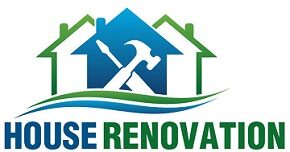A pest inspection is a procedure performed by people licensed to perform inspections on building structures to determine pest activity and identify the causes of infestation. This procedure also aims to predict the areas most likely to be the source of pests.
Pest Control Checklist
A pest control checklist is a tool that can help inspectors when diagnosing properties. Use this checklist to identify or look for signs of pest activity in the property and determine if these areas need to be treated. Optimize the use of this model by following the points below:
Pest hotspots serve as their breeding ground. These destructive species will multiply exponentially and cause costly, irreparable property damage, or both. By performing regular pest control inspections and maintenance, you will effectively ward off unwanted guests such as termites, ants, cockroaches, etc.
Who is responsible for pest control?
Home and building owners can schedule pest control as they see fit. It is, however, a necessary process for a property that is being marketed to potential buyers or tenants. Owners will not be able to sell a property with current issues, while owners are required to maintain it. Both must ensure that the place is safe and habitable for future occupants.
It is best to carry out regular pest control inspections, knowing that pests are very destructive and that any damage to the structure of the building has a negative effect on the value of the property.
Pest control inspections have always been essential for owners of homes and commercial spaces. Homeowners hire the services of professional pest control inspectors to keep rodents and insects at bay and ensure their homes are safe and healthy, corporate office property managersprovide regular pest control inspections to minimize the risk of employees contracting pest-borne illnesses and property damage, and food manufacturers implement an integrated pest management approach to avoid contamination of food products and ultimately protect consumers.
With the pest control industry making $13.68 billion in revenue in 2019 and with an expected growth of 4-5% annual growth rate, pest control inspection companies have it all. interest in stepping back, identifying current challenges and looking for opportunities that can improve work efficiency and capitalize on the momentum of the sector.
How to conduct a thorough pest control inspection?
Pest inspection involves checking many areas of a property (e.g. perimeter, basement, interior areas, etc.) It is important not to miss any spot to avoid re-inspection. Complete and accurate inspection reports are essential for pest control inspections, in order to be able to provide the right solution. Below are some best practices you can follow to help homeowners get good pest inspection reports:
Prepare the Tools
To perform a pest inspection, you will need a few tools. Items such as flashlights, flushing agents or sprays, a magnifying glass, and a pen and paper to record your findings during the inspection.
Crouching
During inspections, especially indoors, it is helpful to get on all fours with a flashlight to better see any damage that could be a sign of pest activity.
Take or attach photos during the inspection and attach them to your reports. Inspectors will then take a look, examine, and make recommendations to help fix the problem depicted in the photo.
A digital pest control checklist can be used as a guide during inspections. Using a digital checklist allows you to effectively use your cell phone or phone device to complete the inspections, allowing for faster completion and data gathering; Avoid losing paper reports.
Pest Control Checklist
Technology has played a crucial role in helping businesses across all industries transform the way they work, and pest control inspection services are no exception. Digital technology has dramatically changed the daily workflow of pest control inspectors, resulting in the improvement of many processes.
One of the most game-changing investments for pest inspection companies has been the acquisition and integration of pest control software. With the benefits this rugged tool offers, it’s no wonder that many companies have adapted and equipped pest control inspectors with this technology.
Want to know how pest management software can impact your operations? Here are 4 ways it can give you that boost:
Productive inspectors are happy inspectors Keeping
inspectors happy means identifying opportunities to free up their time so they can provide quality service to more customers. Pest control software offers a great opportunity to provide just that.
Pest control software can help streamline inspection tasks, such as scheduling tasks, generating reports, and assigning actions. This automation saves valuable time for inspectors, who no longer need to return to the office to gather information. They can use this time to discuss the results in detail with clients and build relationships.
With SafetyCulture (iAuditor), you can also combine the power of pest control software with a mobile training app like EdApp, which can provide ongoing training and development opportunities through small video lessons. . With this set of improvement opportunities, you can keep inspectors satisfied for the long term.
Make Standardization Easier
Pest control inspection best practices are continually evolving, making it cumbersome to update and reprint inspection forms. Digital forms, such as a pest control checklist and work orders , can be created through the pest control software; this can make it easier to standardize inspection templates, as you will only need to update and publish a common template so everyone is on the same page, without the need for paper. By reducing the risk of inconsistency, you can be sure that all pest control inspections for all customers are standardized.

